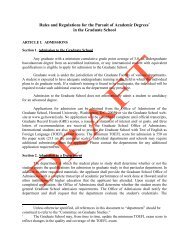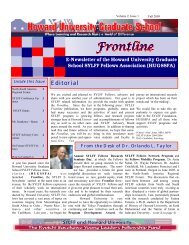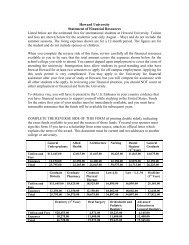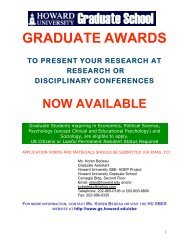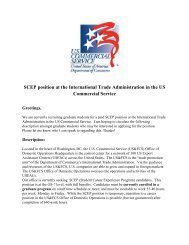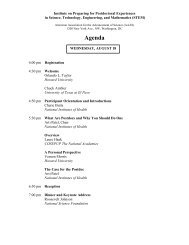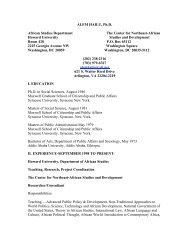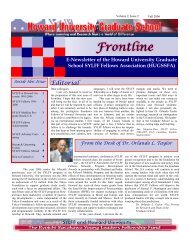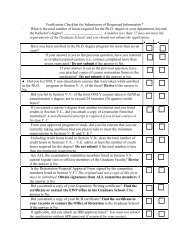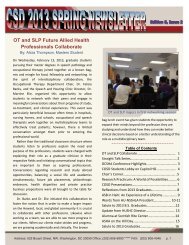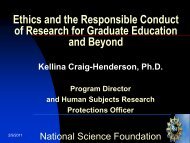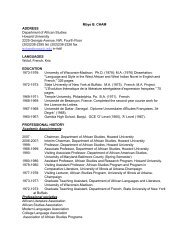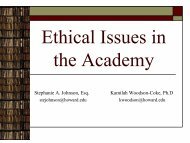Self-Study Design - Howard University, Graduate School
Self-Study Design - Howard University, Graduate School
Self-Study Design - Howard University, Graduate School
You also want an ePaper? Increase the reach of your titles
YUMPU automatically turns print PDFs into web optimized ePapers that Google loves.
5. If <strong>Howard</strong> needs to offer distance-learning courses, is it committing enough resources to<br />
ensure success?<br />
6. How can the <strong>University</strong> offer market-driven certificate programs and maintain quality?<br />
Standard 14: Assessment of Student Learning<br />
• Chair: Professor Veronica Thomas, Education<br />
Scope of Work and Objectives.<br />
This scope of work will assess whether <strong>Howard</strong> students are able to demonstrate upon<br />
graduation, or at other appropriate points, the necessary acquisition of knowledge, skills, and<br />
competencies consistent with institutional and appropriate higher education goals. The work<br />
group will organize the study design around four expected institutional outcomes:<br />
• Developing clearly articulated written statements, expressed in observable terms, of key<br />
learning outcomes: the knowledge, skills, and competencies that students are expected to<br />
exhibit upon successful completion of a course, academic program, co-curricular<br />
program, general education requirements, or other specific set of experiences<br />
• Providing opportunities for students to achieve articulated learning outcomes<br />
• Assessing student achievement of key learning outcomes<br />
• Using the results of assessment to improve teaching and learning and information<br />
planning and resource allocation<br />
Research Questions.<br />
1. How do units articulate what students are expected to know and be able to do upon<br />
completion of their academic program?<br />
2. What written plans for assessing student learning exist at the course, program,<br />
department, and school/college levels?<br />
3. To what extent do course syllabi clearly articulate student learning outcomes in contrast<br />
to teaching outcomes?<br />
4. What strategies assess the alignment among the intended curriculum (for example, course<br />
syllabi), taught curriculum, and tested curriculum?<br />
5. What university-based processes ensure that academic units have identified studentlearning<br />
outcomes (for example, knowledge, skills, and attitudes) for its graduates?<br />
6. How is the curriculum designed to guide the students toward mastery of the expected<br />
learning outcomes?<br />
7. How do the condition of the facilities affect student learning? Faculty teaching?<br />
8. What is the frequency of course offering (availability of required courses)?<br />
9. To what extent is there consistency in course syllabi and expected learning outcomes<br />
among selected courses (multiple section of the same course)?<br />
10. How does the type of professor (teaching assistants vs. adjunct vs. full-time) affect<br />
student learning and the students’ perception of their learning?<br />
11. What services and experiences do units provide to facilitate student learning? How are<br />
these promoted, communicated, perceived, and used?<br />
12. How do faculty members actively support the extended learning goals of students?<br />
13. What evidence supports the existence and sustainability of a <strong>University</strong>, school/college-,<br />
and/or department-wide Student Outcomes Assessment Plan? How have assessment<br />
plans been implemented?<br />
26



